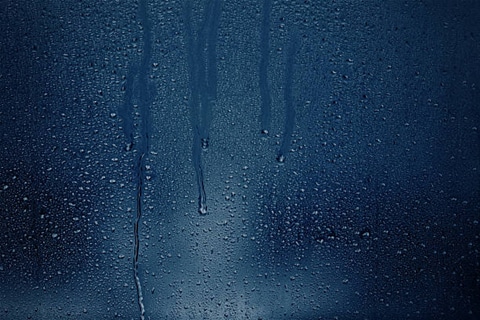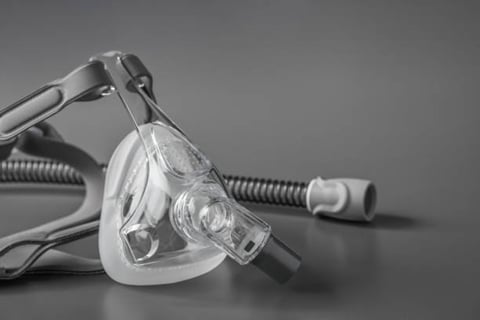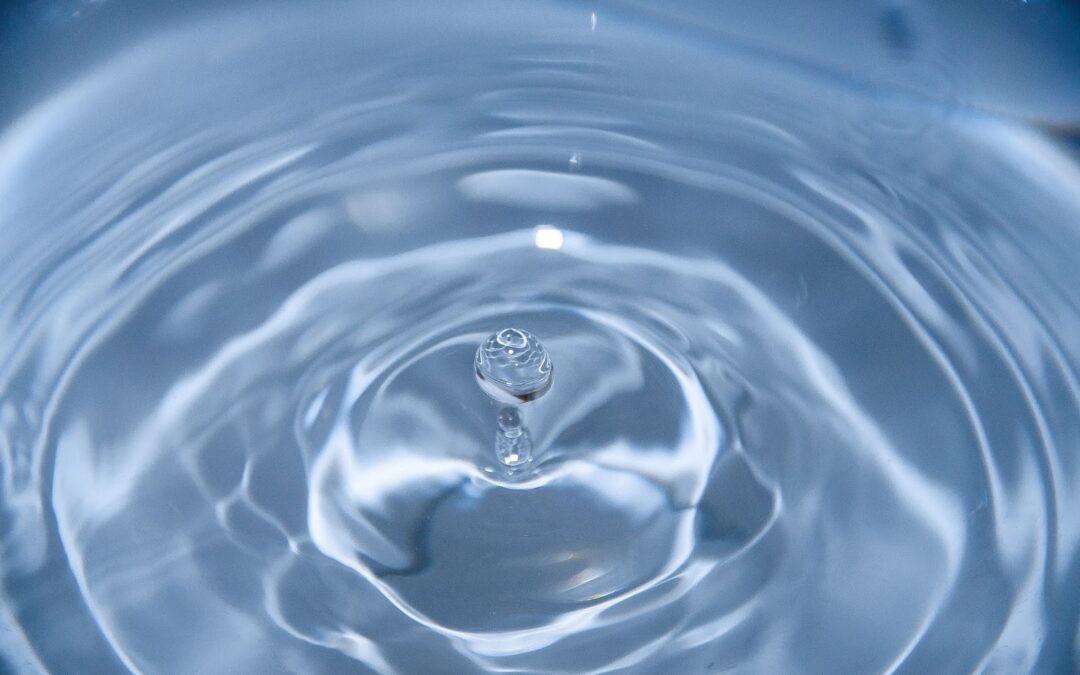Have you ever felt concerned about the amount of water and moisture that was present in your CPAP tubing and mask? You’re not alone! The majority of people who use CPAP experience this issue.
You can get a good night’s rest thanks to continuous positive airway pressure, but suddenly you hear a sputtering sound, and before you know it, water splashes you in the face through your mask. Then you wake up! Is there any way to avoid this from happening?
In this blog post, we’ll tell you everything you need to know and show you how to solve your problem. Keep on reading to learn more!
What Is the Meaning of Moisture?

Moisture is a term used to describe the presence of water or water vapor in a substance or environment. It plays an important role in maintaining the proper balance and functioning of ecosystems, as well as providing essential hydration for living organisms.
In the context of CPAP therapy, refers to water vapor and liquid water that may collect in CPAP tubing or on a CPAP mask. It is important for CPAP users to regularly check for and remove excess moisture in order to maintain proper CPAP function.
What Consequences Does Moisture in your CPAP Have?
1. Strange noise at night.
During the night, the moisture in the tube can generate a range of strange noises, ranging from gurgling to pounding as air pressure moves down the droplet-filled tube.
2. Mold and bacteria development.
Because lingering moisture is a breeding ground for viruses and molds, you risk getting bacteria and germs into your airway, possibly developing a respiratory infection.
3. Reduced durability of the equipment.
Moisture resulting from rainout can also increase the deterioration of your supplies, adding to the formation of microscopic holes in your tubing.
4. Rainout.
It occurs when warm, moist air from the CPAP mask and tubing meets cold surfaces, causing the water vapor to condense and collect in the tube. In layman’s terms, “Rainout” is an EFFECT of moisture in a CPAP tube.
What Is CPAP Rainout?
If you use a heated humidifier with your CPAP machine you will know that the air is heated in the humidifier before it travels through the tubing to the mask and into your airway. However, your tube causes a significant reduction in temperature for the air as it passes through it.
Rainout from a CPAP machine happens when the warm air in your tubing cools down and condenses into the water before it reaches your mask. This can cause water to get inside your mask, leaving your face wet and uncomfortable. It can also stay inside your tube, making gurgling noises during the night and waking you up throughout your sleep.
Is CPAP Rainout Safe?
Suppose you don’t clean your CPAP machine and accessories regularly and then experience CPAP rainout. You may risk getting bacteria-filled water on your skin. This isn’t particularly dangerous in and of itself but we would like to avoid it. (Here are some ways to clean your CPAP machine).
Because water provides an ideal environment for the growth of bacteria, users of CPAP machines must keep their masks and hoses clean.
Even though the tubing, your mask, and other components of the device might appear germ-free, the inside of the machine can and will become contaminated with various harmful germs, mold, dust, and bacteria. This puts you at risk of developing respiratory tract irritation or a respiratory system infection.
Tips on CPAP Moisture Prevention
Tip #1: Adjust the height of your CPAP machine.
Adjust the height of your CPAP machine so that it is lower than the level of your mask. Employ the force of gravity to your advantage to prevent the condensation from moving toward your mask.
If your CPAP machine is sitting on a bedside table and the tubing leading to your mask drains downward, you may want to consider moving the machine to a lower surface so that the air and tubing flow upward. If water droplets condense, they will not enter your mask but return to the humidifier.
Tip# 2: Wrap your CPAP hose to keep the warm air in.
By wrapping the hose with specially designed tubing wrappers, it is possible to insulate the blowing air from the lower temperature of the room, thus lowering the amount of “rainout” that occurs. You can run it underneath your blankets if you want to keep the tubing warm.
Tip #3: Choose a CPAP unit with automated adjusting capabilities.
Many of the more recent CPAP systems come equipped with built-in climate control capabilities that continuously monitor and alter the air temperature in your mask and tubing to ensure you have the most comfortable experience possible while using the device.
Tip #4: Make use of heated CPAP tubing.

Because it maintains a steady temperature of the air as it flows from the humidifier to your mask, heated tubing can significantly cut down on rainouts. If the temperature is maintained, there will be no condensation of the air into droplets.
The atmosphere in your bedroom, such as rises or reductions in temperature or humidity, as well as variations in your CPAP pressure and mask leak, are all factors considered when the heated tubing is used to regulate the humidification process in real time.
Tip #5: Adjust your humidifier settings.
Talk to the company that supplied your equipment about altering the settings on your humidifier. It’s possible that you won’t require as high of a temperature setting if you reside in a generally warm and humid location. The humidifier attempts to heat the air to about 80 degrees Fahrenheit.
Tip #6: Make sure the temperature in your bedroom is comfortable.
The rainout is caused by a temperature differential between the air in your tube and the air in your bedroom, which may be determined by measuring both temperatures. Condensation in your tubing is more likely to appear if your room is extremely cold throughout the night.
Why Is There Water in The CPAP Tubing and Mask?

Extra condensation is the cause of the water in your CPAP tube. The heated humidifier makes you feel better by adding more moisture to the air you breathe. At some point, there will be so much water in the air that it will rain into your tubing.
Most likely, this is happening because the air is getting cooler as it goes through the tubes. This often happens when it’s cold outside, or someone turns down the AC in their home.
How can you tell if there is water in your CPAP tube?
- It sounds like popping while the CPAP machine is operating
- You can see some moisture on your mask.
- Sounds of gurgling originating from your CPAP mask or machine
- There are some moisture particles in your CPAP tube.
- Having water sprayed on your face throughout the night
How To Remove Water from Your CPAP Tube
A few simple ways will help you reduce or eliminate the water in your CPAP Tube without spending much money.
Ways #1: Get rid of any extra water in the CPAP tubing so you can start with a dry tube the next night. You can do this by running the CPAP for a few minutes with no water in the water reservoir. This will dry it out. Or, remove the CPAP Tube and hang it over a doorway until it is completely dry.
Ways #2: The first thing you can do to get rid of the water is to turn down your humidity setting. This will reduce the amount of water that is added to the air. Maybe that doesn’t work, or you find that being in a place with less humidity level makes you feel dry.
Ways #3: Include a tube that is heated. Most of today’s more advanced CPAP machines have the option of heated tubing. Because the heated tube maintains a consistent temperature for the humidified air over its length, it prevents water from entering your tube.
Conclusion
As you can see, you can do a few things to help reduce the amount of water and moisture in your CPAP system. If you’re experiencing water or moisture in your CPAP tubing and mask, it’s essential to find a solution as soon as possible. This is annoying and uncomfortable, and the excess moisture can also be dangerous.
We hope this blog post has helped you understand the causes of water and moisture in your CPAP tubing and mask.
If you still have questions or need help finding a resolution, please don’t hesitate to reach out for a discovery call with one of our experts. We want to ensure you get the most out of your CPAP therapy and stay healthy and comfortable.
What did you learn in today’s blog post? Share it with us!



